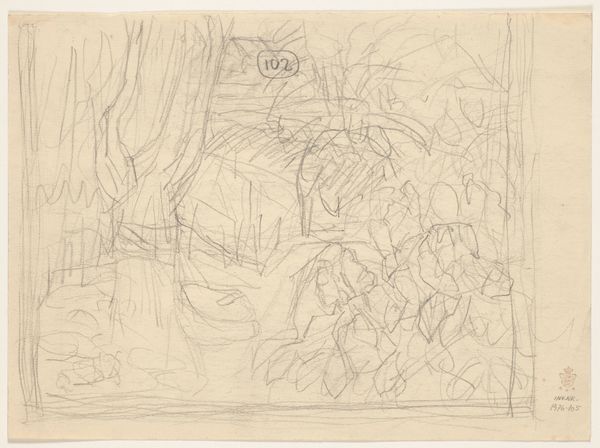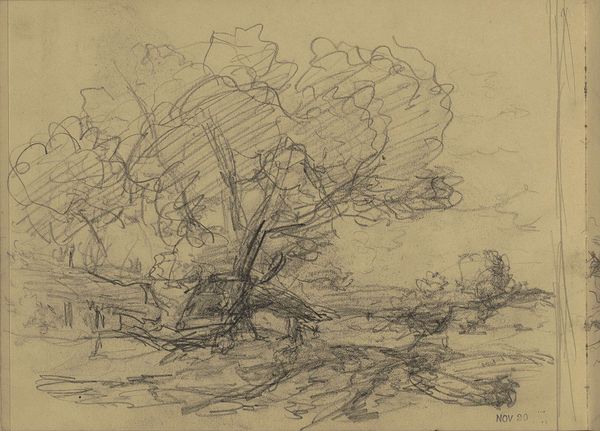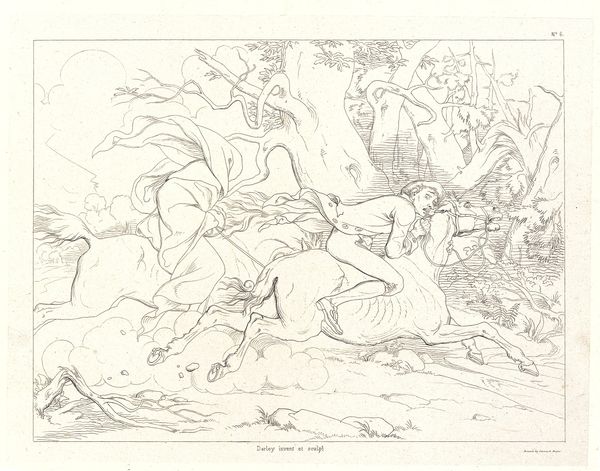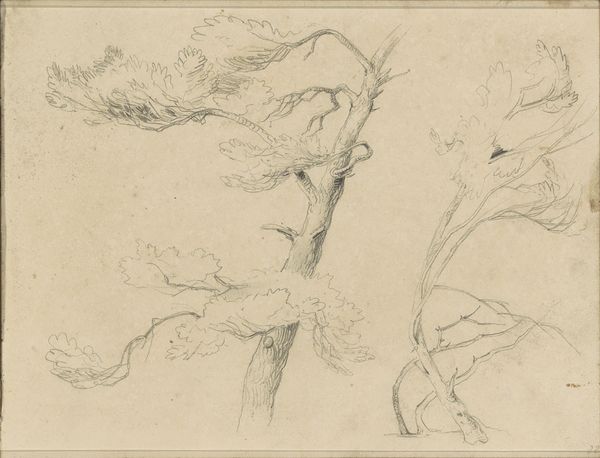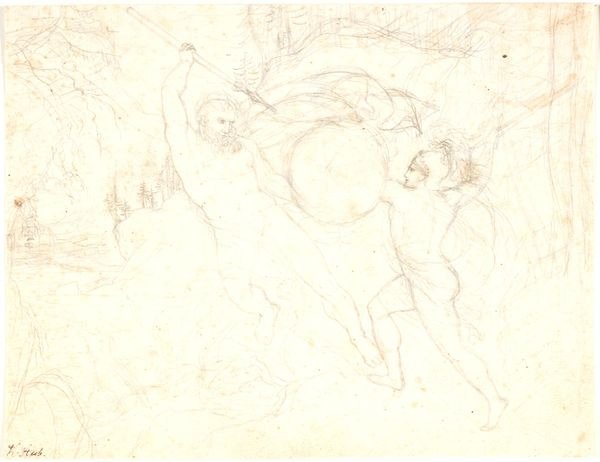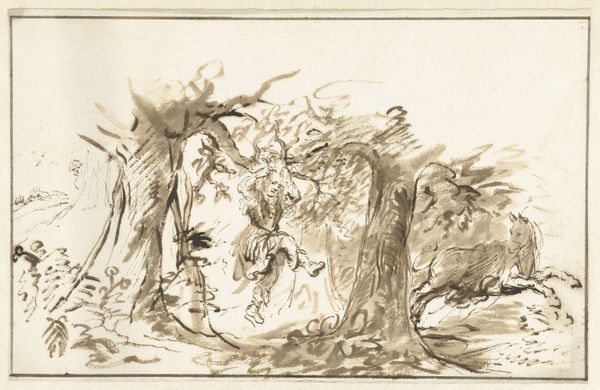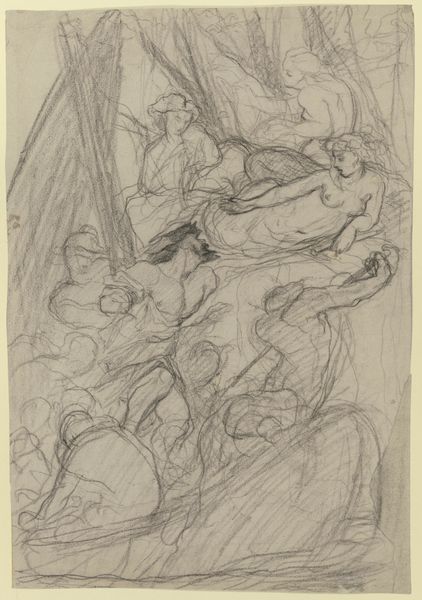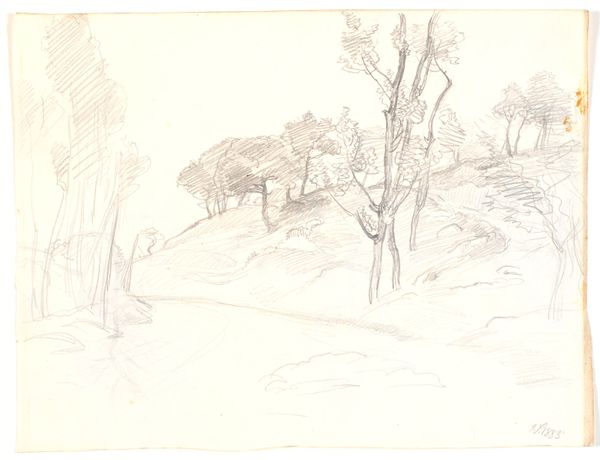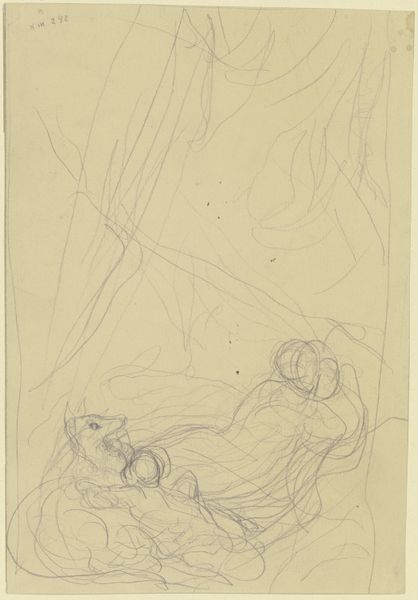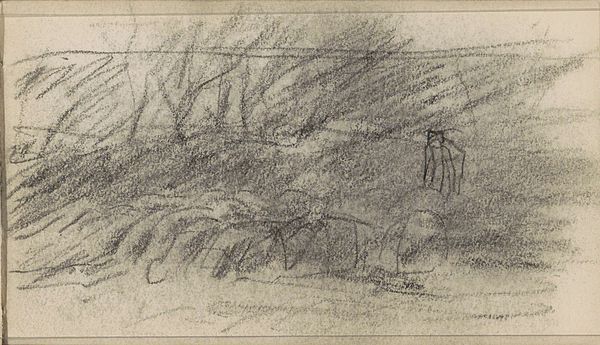
drawing, pencil
#
drawing
#
landscape
#
pencil
#
realism
Dimensions: 130 mm (height) x 219 mm (width) (bladmaal)
Curator: Here we have Joakim Skovgaard's "Studie af stort træ," or "Study of a Large Tree," created between 1891 and 1894. It's a pencil drawing. What’s your initial take? Editor: It feels fragile, almost hesitant. The delicate lines give it a sense of transience, like a memory fading at the edges. It invites contemplation on the simple beauty of nature. Curator: Absolutely. Skovgaard's use of pencil is interesting. He wasn’t creating a finished piece for consumption. It was an act of labor, of studying, a practical exercise to deeply observe the specific texture and shape of that particular tree. How much labor does a piece like this truly demand, and who has access to spend their labor this way? Editor: That's a salient point. There is that sense of privileged observation. We must also think about what this landscape represents within its specific socio-political context. Consider the era – Denmark at the close of the 19th century, undergoing rapid urbanization and industrialization. Landscape art was a critical touchstone for thinking about national identity. What narratives does it reproduce, and which does it omit? Curator: Right, thinking about production informs that reading. What were the conditions needed to produce not only this drawing, but the national identity it supposedly portrays? It's all very well to depict the grandeur of nature, but we can ask questions about who owned that land, who worked it, and who had the luxury of contemplating it through art. Editor: And within that contemplation, is there a critique? Or simply an aesthetic idealization divorced from the realities of life for the majority? Does this work invite resistance or simply acceptance? Curator: The interplay of soft pencil lines almost feels incomplete – intentionally alluding to temporality. The artist does capture detail in how the light hits the trunk. Editor: True, the skeletal tree contrasts the delicacy elsewhere and that speaks of resilience amid this backdrop. Curator: By questioning the labor that informs production, it deepens how we analyze landscapes. Editor: Agreed. Situating this study within broader social conversations—nationalism, class, and our understanding of landscape, reminds us that no artwork exists in a vacuum.
Comments
No comments
Be the first to comment and join the conversation on the ultimate creative platform.

